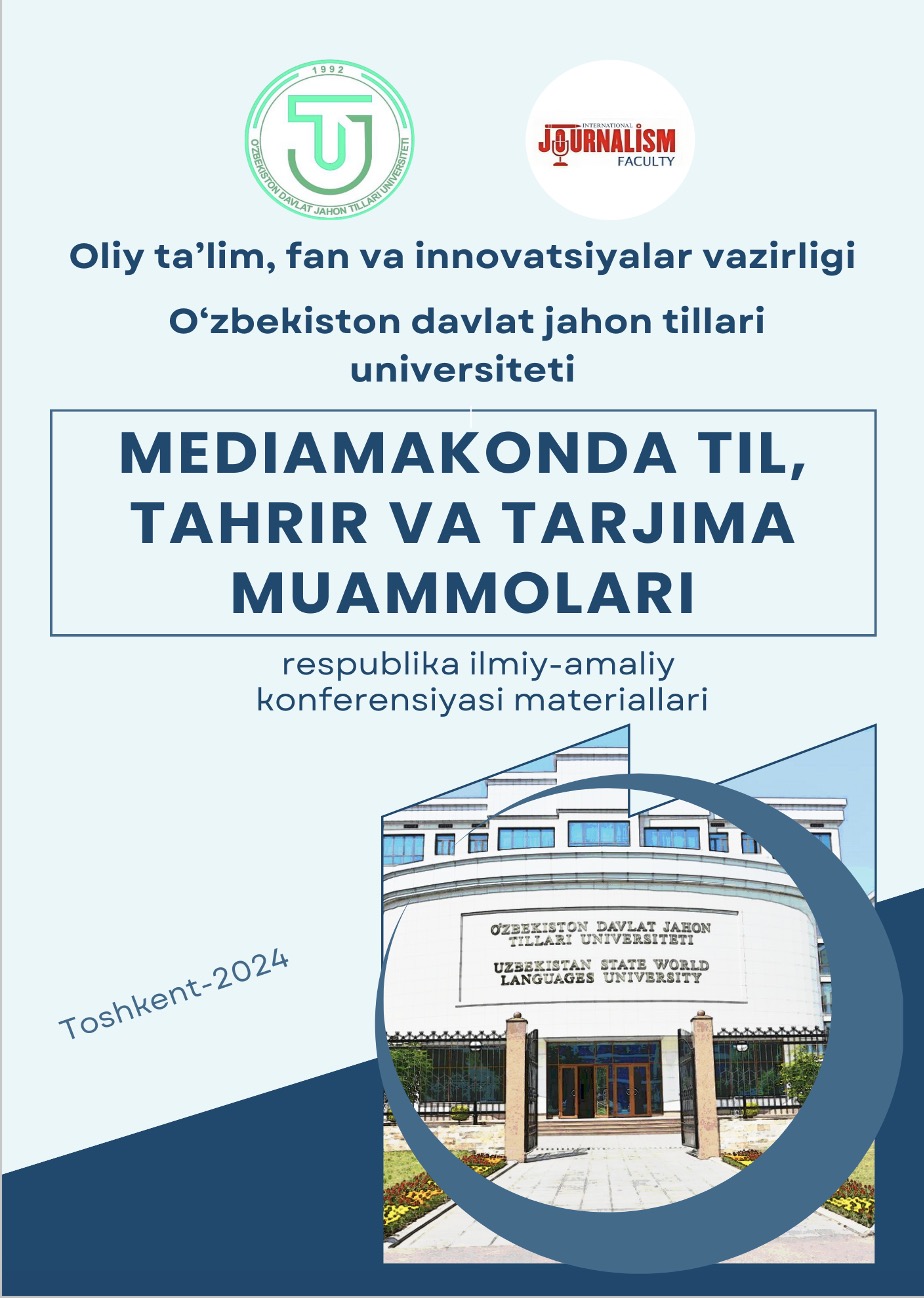COMPARATIVE ANALYSIS OF STYLISTIC DEVICES IN LITERARY BOOKS (as examples of English and Uzbek materials)
Keywords:
fiction, stylistic devices, literary works, comparative analysis, stylistic elements, storyAbstract
In this article, a comparative analysis of stylistic tools in fiction books, in English and Uzbek fiction, shows that story structure and point of view serve as the main stylistic elements that shape the dynamics of the story. In fiction, the use of characters and dialogue in English and Uzbek literary works provides information on different methodological approaches.
References
Гумбольдт В. фон. Язык и философия культуры. – M., 1985.
Салиева З.И. Консептуальная значимость и национально – культурная специфика сентенции в английском и узбекском языках: Автореф.дисс. … канд.филол.наук. – Ташкент, 2010.
Mahmudov N. Tilning mukammal tadqiqi yo’llarini izlab…// O’zbek tili va adabiyoti. – Toshkent, 2012
Mahmudov N. Xudoyberganova D. O’zbek tili o’xshatishlarining izohli lug’ati.-T.: Ma’naviyat, 2013
Turgunaliyeva Kristina Ma’rufjonovna. (2023). Stylistic Analysis of Poems. Galaxy International Interdisciplinary Research Journal, 11(4), 796–798. Retrieved from https://giirj.com/index.php/giirj/article/view/5085
Features of the use of stylistic devices in English and Uzbek based on pride and prejudice by james austin. Lobar Daniyorovna Ibragimova Surkhandarya region termiz state university, 1 st master of linguistics (English) Panjiyeva Nasiba Ph.d, assistant professor of TerSU
Grinin, Leonid & Korotayev, Andrey (eds.) (2009). Hierarchy and Power in the History of Civilizations: Cultural Dimensions. Moscow: KRASAND.
Cambridge University Press 978-0-521-51556-6 - Adjunct Adverbials in English, Hilde Hasselgard.
www.ziyonet.com
Downloads
Published
Issue
Section
License
Copyright (c) 2024 Zohid Matyakubov

This work is licensed under a Creative Commons Attribution-NonCommercial-NoDerivatives 4.0 International License.
All Rights Reserved.





